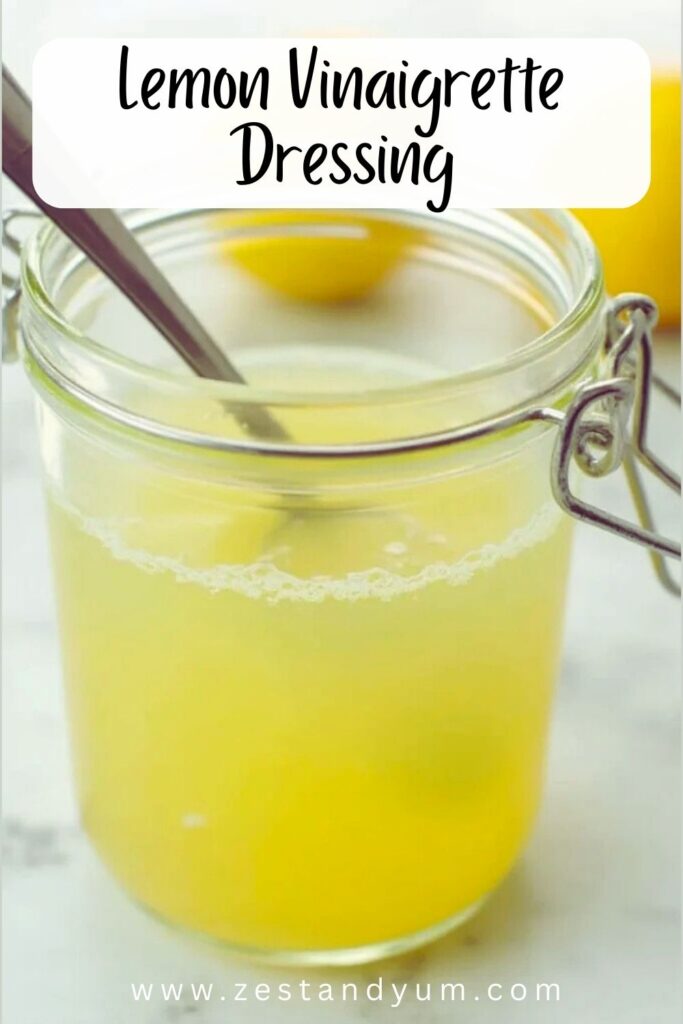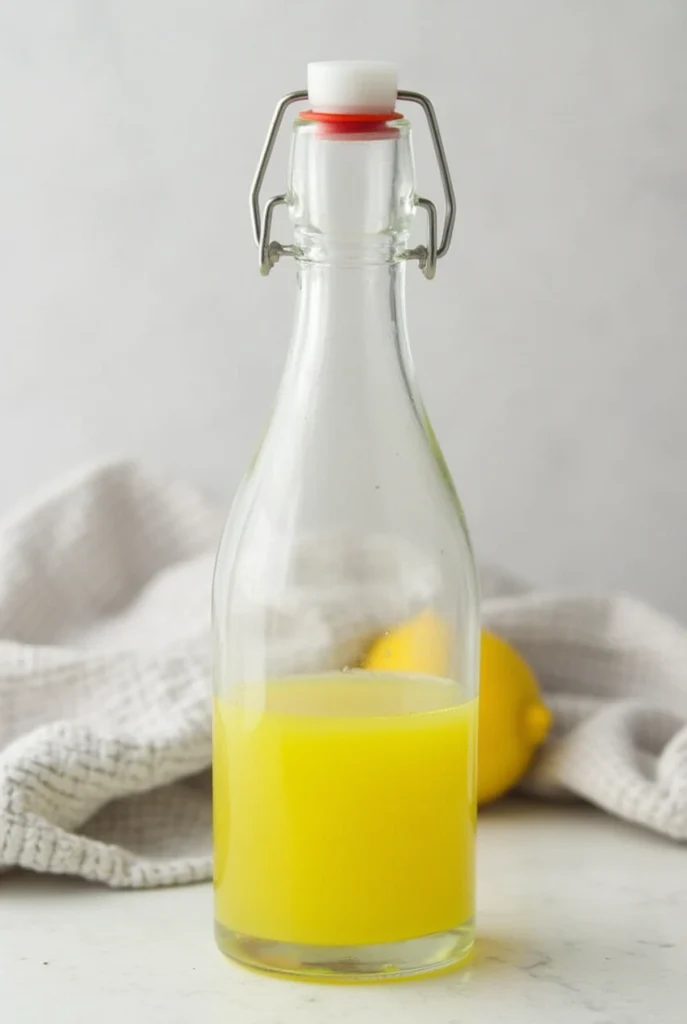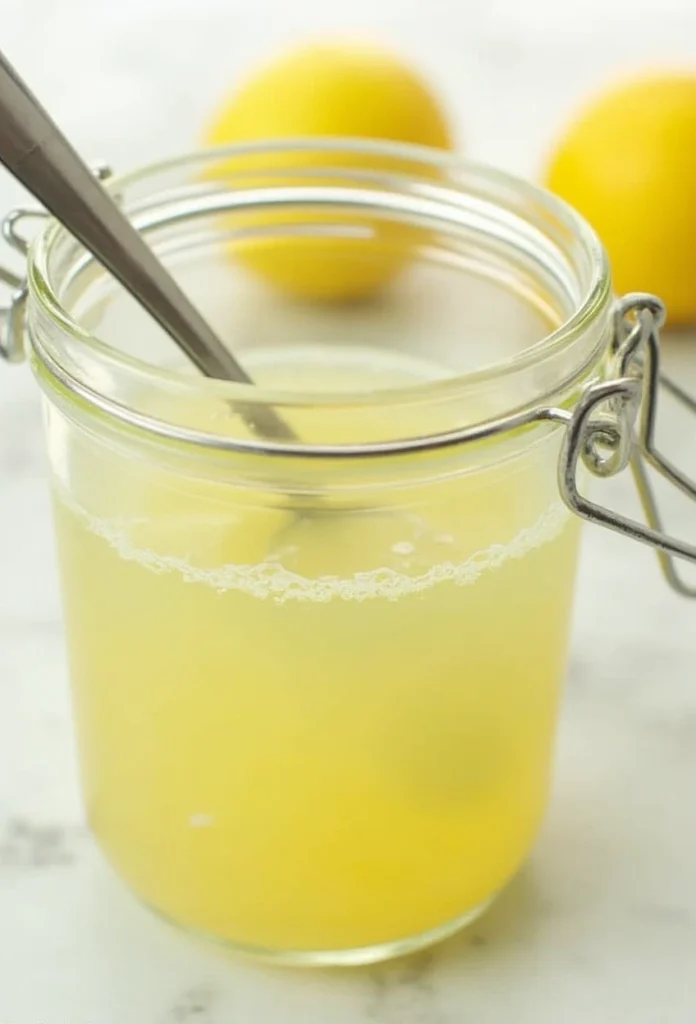Lemon vinaigrette dressing is a refreshing citrus-based sauce that stands out among other salad dressings due to its bright, zesty flavor profile. A vinaigrette typically combines oil, acid (like vinegar or citrus juice), and seasonings, but lemon vinaigrette takes it further by emphasizing the natural tang of lemons. This dressing has been a staple in kitchens worldwide for centuries, with citrus playing a crucial role in enhancing salads and more.
The history of vinaigrettes dates back to ancient times when cooks combined oils and acids to preserve food while adding vibrant flavors. Over the years, lemon vinaigrette emerged as a favorite because of its versatility it pairs beautifully with greens, proteins, grains, and even roasted vegetables. Its ability to elevate any dish makes it indispensable in both casual meals and fine dining experiences.
The Benefits of Using Lemon Vinaigrette
Using lemon vinaigrette offers numerous health benefits. It’s low in calories yet rich in heart-healthy fats from olive oil and packed with vitamin C from fresh lemons. These qualities make it an excellent choice for those following healthy salad dressing routines or embracing clean eating recipes.
Beyond health advantages, this dressing shines through its versatility. Whether drizzled over salads, used as a marinade for chicken or fish, or served as a dipping sauce, lemon vinaigrette adapts effortlessly to various culinary needs. Additionally, making it at home supports sustainability efforts since it relies on simple, pantry-friendly ingredients that reduce waste and unnecessary packaging.
Key Ingredients for Lemon Vinaigrette Dressing
To craft the perfect lemon vinaigrette dressing, start with fresh lemons. Choose ripe, juicy ones for optimal flavor look for thin-skinned fruits that feel heavy for their size. For the base, extra virgin olive oil provides unmatched richness and aroma compared to regular olive oil. However, if you prefer a lighter taste, regular olive oil works well too.
Achieving acidic balance involves incorporating vinegar alongside lemon juice. Options include red wine vinegar for boldness, white wine vinegar for subtlety, or apple cider vinegar for a sweeter edge. Seasonings play a critical role in rounding out the flavors. Salt and pepper add depth, minced garlic introduces warmth, Dijon mustard helps emulsify the mixture, honey balances acidity with sweetness, and herbs like thyme or basil bring freshness.
These essential salad ingredients ensure your lemon vinaigrette achieves gourmet seasoning tips while maintaining balanced flavors.
Step-by-Step Guide to Making Lemon Vinaigrette
Begin by preparing your ingredients. Zest one lemon for added fragrance, then juice it to extract approximately two tablespoons of liquid. Mince a clove of garlic finely for infusion into the dressing. Measure out three tablespoons of olive oil, along with one tablespoon of your chosen vinegar.
To create the dressing, combine all wet ingredients in a bowl or jar. For emulsification techniques, whisk vigorously until the oil and acids blend smoothly. Alternatively, shake everything together in a sealed jar for convenience. If desired, adjust consistency by thinning with a teaspoon of water or enhance sweetness with a drizzle of honey.
Once prepared, store your lemon vinaigrette in an airtight container in the refrigerator. Note that it may thicken slightly when chilled; simply stir or let it sit at room temperature briefly before serving. With these easy homemade dressing steps, enjoy delicious results every time!
Creative Variations of Lemon Vinaigrette Recipes
Lemon vinaigrette is a canvas for creativity, offering endless possibilities to suit different tastes. Herb-infused versions add brightness with fresh parsley, dill, or cilantro, bringing a burst of greenery to your dishes. For those who love heat, spicy twists like red pepper flakes or sriracha introduce boldness without overpowering the citrus tang.
For creamy adaptations, blending Greek yogurt or avocado transforms the vinaigrette into a richer texture that pairs beautifully with heartier salads or grain bowls. Sweet variations using maple syrup or agave create a perfect balance between sweetness and acidity, ideal for fruit salads or desserts. These gourmet salad dressings highlight unique flavor combinations, making them standouts in any culinary repertoire.
Culinary Uses Beyond Salads
Beyond its traditional role as a salad dressing, lemon vinaigrette shines in various culinary applications. Use it as a marinade to tenderize proteins such as chicken, fish, or tofu while infusing them with zesty goodness. Drizzle it over roasted vegetables or grilled meats for an extra layer of flavor and moisture. It also serves as a delightful dip for bread, crudités, or appetizers, enhancing their natural taste profiles.
This versatile sauce pairs effortlessly with grain bowls, pasta salads, or even charcuterie boards, adding freshness and acidity where needed. As a flavorful marinade or gourmet meal enhancement, lemon vinaigrette proves indispensable in modern kitchens.
Health Benefits and Nutritional Information
A single serving of lemon vinaigrette provides approximately 100-150 calories, depending on oil quantity and added ingredients. Rich in healthy fats from olive oil and vitamin C from lemons, it supports overall wellness. Compared to store-bought options, homemade versions offer lower sodium levels and are free from artificial preservatives.
To cater to specific diets, adjust recipes accordingly substitute honey with stevia for keto-friendly results or ensure all components align with vegan standards. These nutrient-rich dressings provide dietary-friendly options for everyone.
See Also:
FAQs About Lemon Vinaigrette Dressing
How long does homemade lemon vinaigrette last? Properly stored in the refrigerator, it remains fresh for up to one week. Always shake before use as separation occurs naturally.
Can I use bottled lemon juice instead of fresh? While possible, fresh lemon juice delivers superior flavor and aroma. Bottled alternatives may lack vibrancy due to processing methods.
Is lemon vinaigrette gluten-free? Yes, provided no cross-contamination occurs during preparation. Verify ingredients if purchasing pre-made versions.
How do I make my vinaigrette thicker? Incorporating Dijon mustard or reducing liquid content helps achieve desired consistency.
What’s the difference between vinaigrette and dressing? Technically, all vinaigrettes are dressings, but not all dressings are vinaigrettes. The distinction lies in ingredient composition and emulsification techniques.
Cultural Significance and Modern Popularity
Lemon vinaigrette plays a significant role in Mediterranean and Middle Eastern cuisines, where simplicity meets sophistication. Its resurgence in modern cooking aligns with health-conscious trends emphasizing whole foods and minimal processing. Influential chefs and brands have elevated this humble dressing by incorporating innovative techniques and premium ingredients, turning it into a trendy salad dressing favored globally.
From global culinary traditions to chef-inspired recipes, lemon vinaigrette continues evolving while retaining its core appeal a refreshing blend of tang and zest.
Celebrating Lemon Vinaigrette as a Kitchen Staple
lemon vinaigrette stands out as an essential recipe for home cooks seeking flavor-enhancing sauces. Its versatility allows experimentation across flavors and applications, elevating everyday meals into extraordinary experiences. Whether used as a dressing, marinade, or dip, this kitchen staple adds brightness and depth to countless dishes.
Embrace its potential and let your creativity run wild lemon vinaigrette is more than just a sauce, it’s a cornerstone of delicious and nutritious cooking


Lemon Vinaigrette Dressing
- Total Time: 10 minutes
- Yield: About ¾ cup 1x
- Diet: Vegan
Description
This lemon vinaigrette dressing is a bright, zesty, and refreshing citrus-based sauce perfect for salads, marinades, roasted vegetables, and more. Packed with vitamin C and heart-healthy fats, it’s a flavorful and healthy addition to any meal.
Ingredients
- 1 lemon (zest + ~2 tbsp juice)
- 3 tbsp extra virgin olive oil
- 1 tbsp vinegar (red wine, white wine, or apple cider)
- 1 clove garlic, finely minced
- 1 tsp Dijon mustard (for emulsification)
- 1 tsp honey (or maple syrup, agave, or stevia, optional)
- Salt and black pepper to taste
- Optional herbs: thyme, parsley, dill, basil
- Optional: pinch of red pepper flakes or sriracha for spice
Instructions
- Zest the lemon and juice it to get about 2 tablespoons.
- Mince the garlic.
- In a bowl or jar, combine lemon juice, zest, garlic, vinegar, Dijon mustard, and honey.
- Slowly whisk in olive oil until fully emulsified or shake everything in a sealed jar.
- Add salt, pepper, and herbs to taste.
- If needed, thin the dressing with a teaspoon of water.
- Store in the fridge in an airtight container for up to 1 week. Shake or stir before serving.
Notes
- Add Greek yogurt or avocado for a creamy twist.
- Use as a salad dressing, marinade, or dip.
- Swap honey with stevia for keto-friendly or vegan options.
- Red pepper flakes or sriracha can add a spicy kick.
- Let sit at room temperature before serving if refrigerated.
- Prep Time: 10 minutes
- Category: Dressing
- Method: Whisk / No-cook
- Cuisine: Mediterranean / Global
Nutrition
- Serving Size: 2 tablespoons
- Calories: 100–150
- Sugar: 1–3g (depending on sweetener)
- Sodium: 50–100mg (adjust to taste)
- Fat: 10–14g
- Saturated Fat: 1.5–2g
- Unsaturated Fat: 8–10g
- Trans Fat: 0g
- Carbohydrates: 2–4g
- Fiber: 0mg
- Protein: 0mg
- Cholesterol: 0mg



